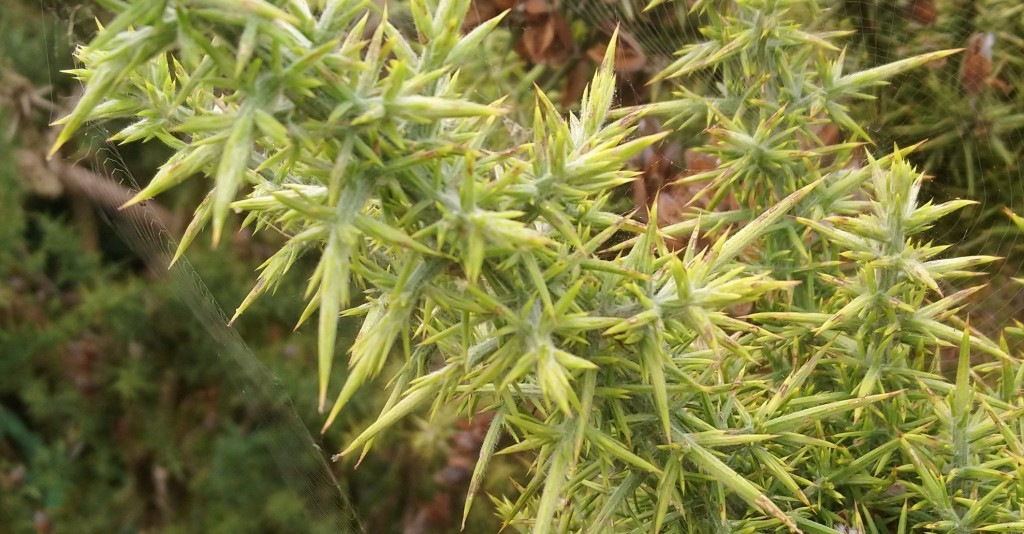
[351] Ulex europaeus, Gorse
Introduction
Ulex europaeus, Gorse, is a bushy plant that can grow extensively in wild, open land. It can be covered in bright yellow flowers that are protected by vicious spikes.
It is also known as Furze or Whin.
It’s the only type of Ulex found in most of Europe so it can be called Common Gorse to distinguish it from the others.
Taxonomy
Kingdom – Plants
Division – Vascular Plants
Class – Angiosperms (Flowering Plants)
Order – Fabales
Family – Fabaceae
Subfamily – Faboideae
Tribe – Genisteae
Genus – Ulex
Scientific Name – Ulex europaeus
Name
Gorse comes from old Germanic roots and is cognate with hordeum, the Latin for [177] Barley – both coming from roots meaning bristly.
Furze comes from Old English roots, possible cognate with fire.
In Classical Latin ulex was used for a shrub like Rosemary, Rosmarinus officinalis.
Description
Gorse is an evergreen shrub, growing to a height of two or three metres.
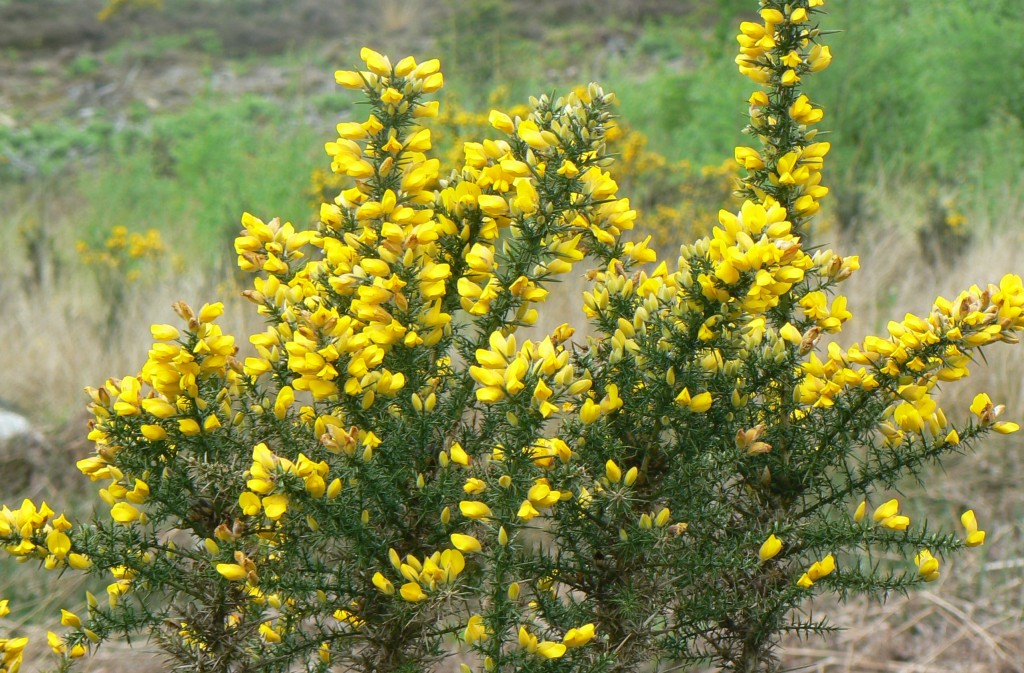

It can provide extensive areas of cover in moorland areas where no other vegetation grows higher than a few centimetres – apart from an occasional stumpy [103] Hawthorn.
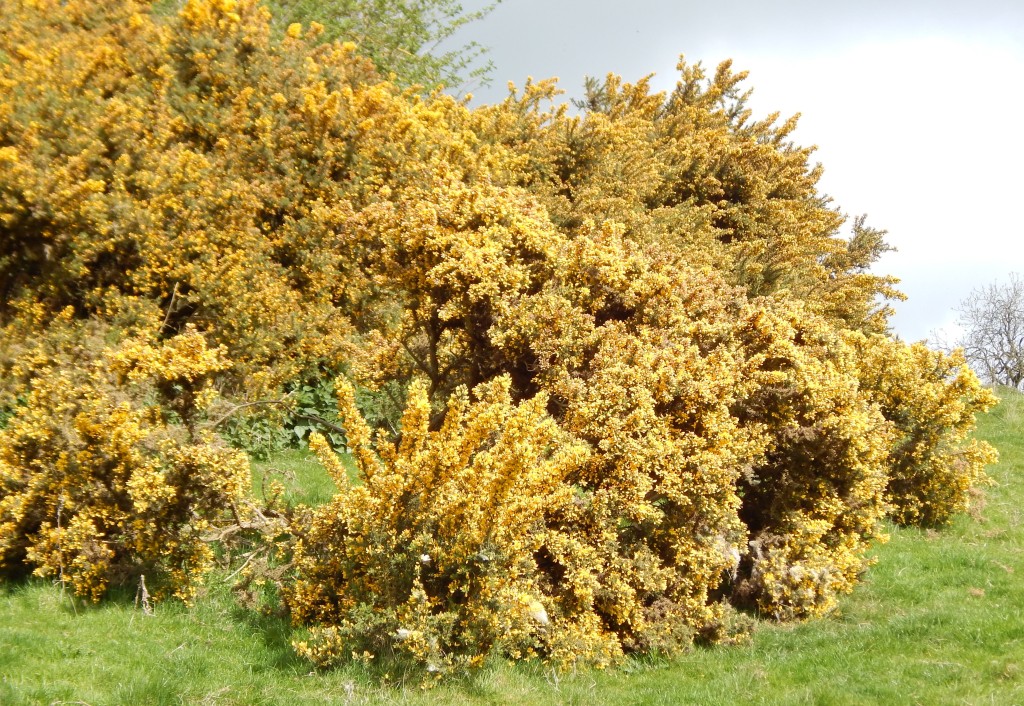
Its stems are covered in long sharp spines.
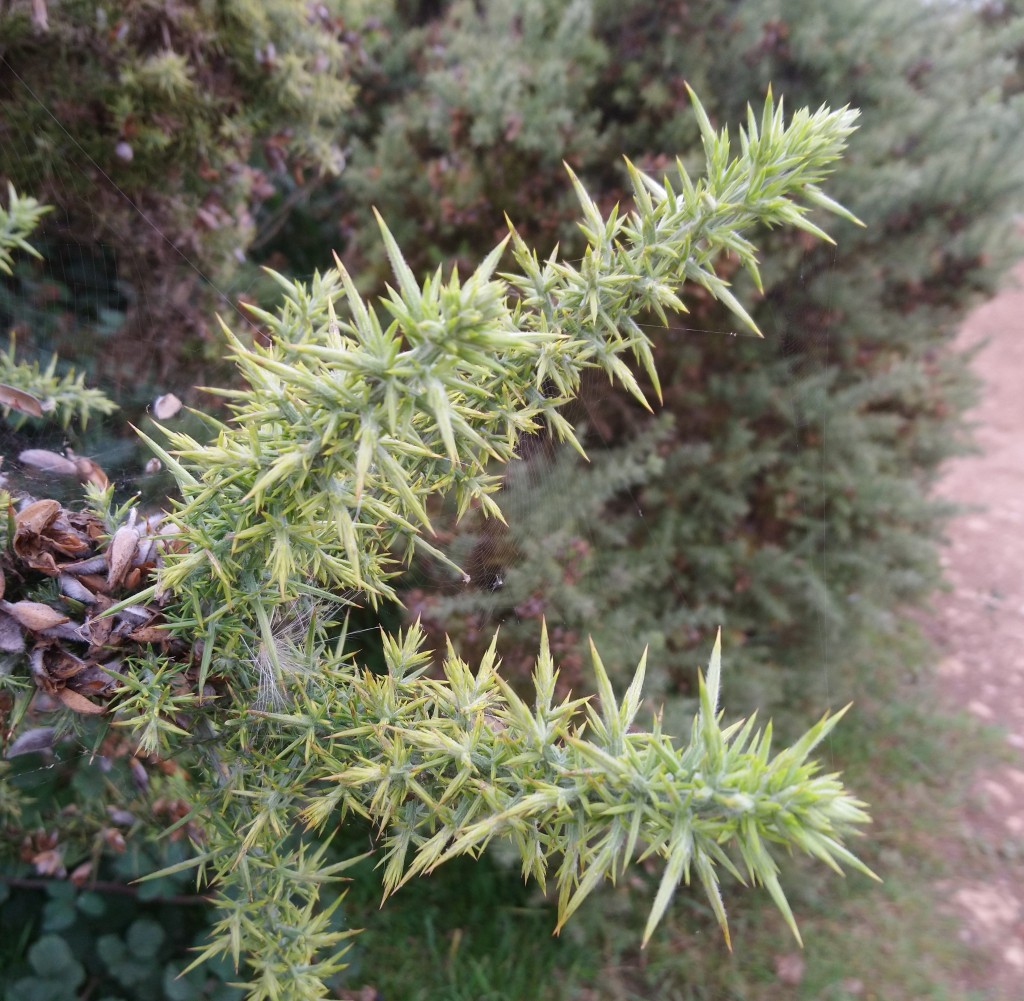

Large numbers of bright yellow flowers are produced throughout the year, particularly in spring when they cover the bush completely.
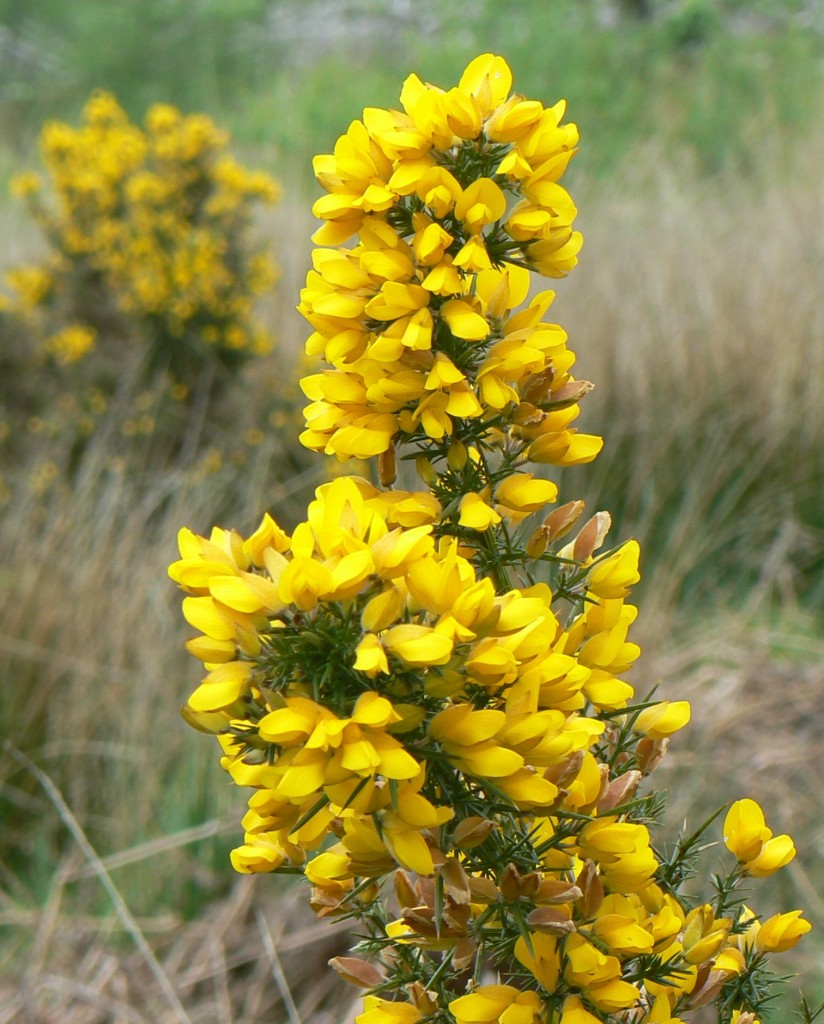

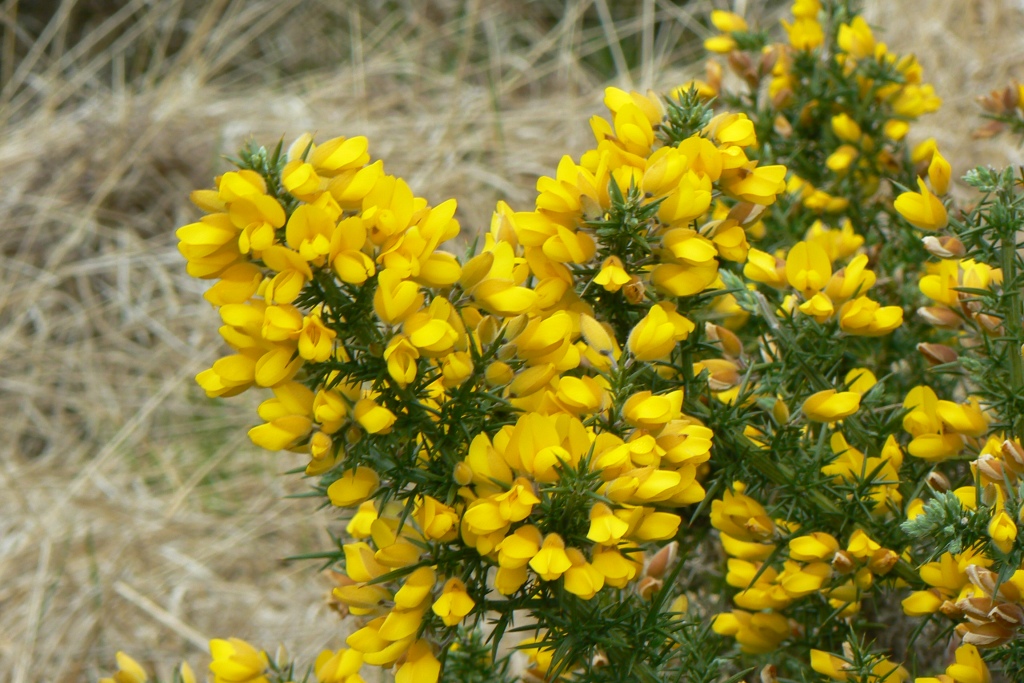

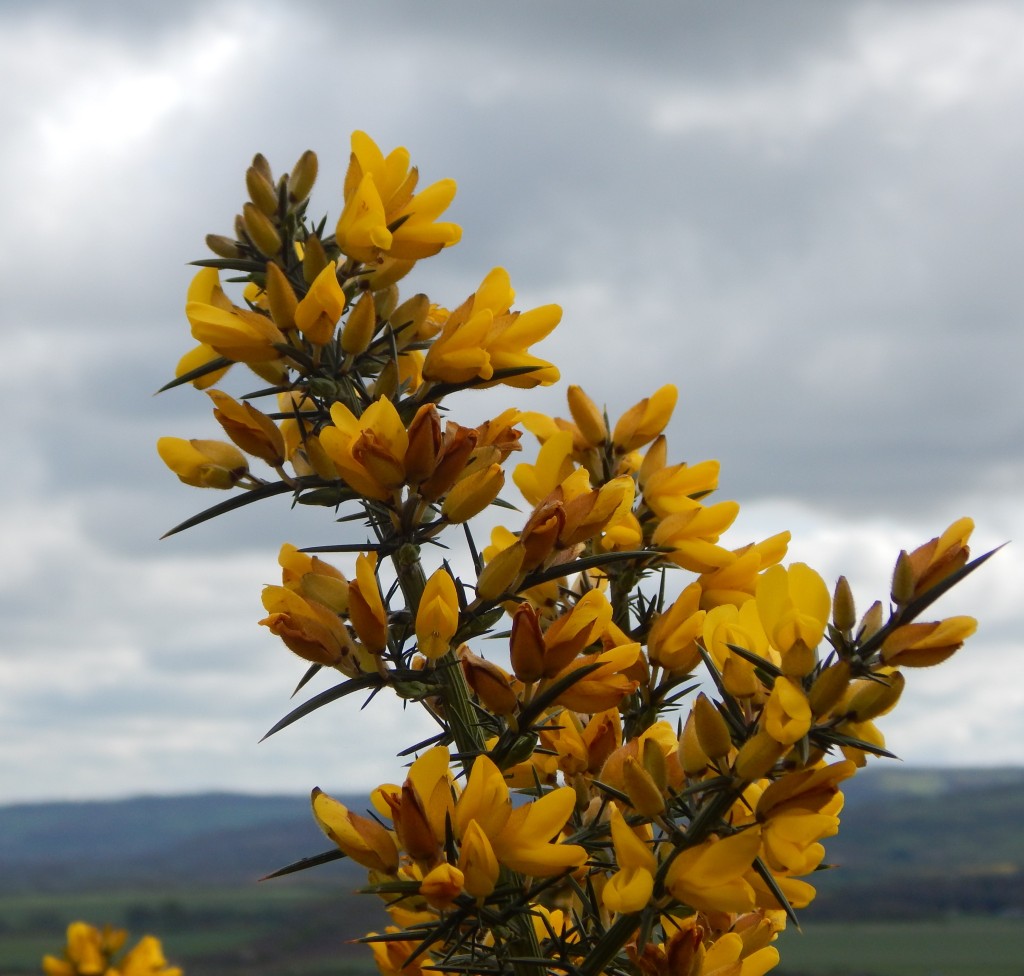
As for other members of Fabaceae, they produce seeds in pods.
Habitat
Gorse is native to Western Europe including the whole of the British Isles. It is mainly found in open moorland and commons.
It can be cultivated as an ornamental plant and in some circumstances its spikes help to make it an excellent hedge species.
Gorse is very hardy and survives heavy frosts. It also has a root system that allows it to re-grow after spreading fires.
Other Notes
Gorse is not widespread in the sense of being everywhere, but when you do find it, it’s probably extensive. You can find it in wild, uncultivated, exposed locations such as hillsides.
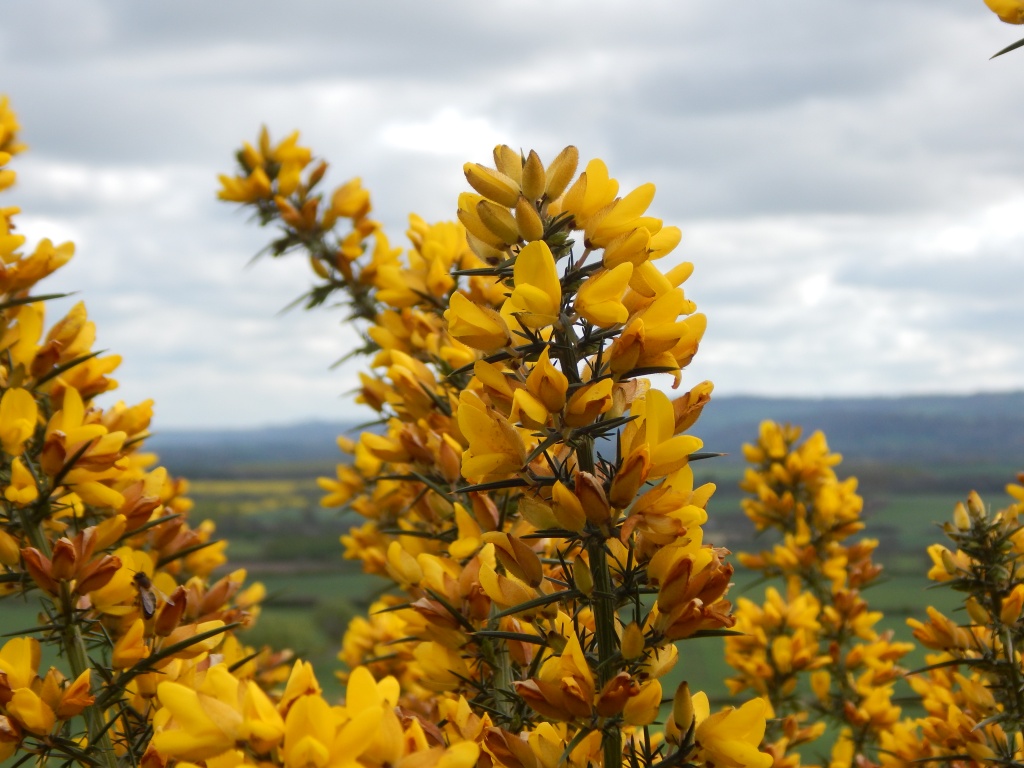
See also
The tribe Genisteae, which includes Gorse, also includes Lupins, Laburnum and several species of Broom. I tend to think of Broom as almost identical to Gorse without the spines but it is not so simple – some Broom species have spines and some types of Gorse do not.
Broom can grow wild in locations similar to where gorse is found. Several species of Broom are cultivated garden plants, usually as hybrids or cultivars.
Some, but not all species of Broom are in the genus Genista, which has the distinction of providing the name of a dynasty of English Kings. Plantagenet is a variation of ‘planta genista.’
